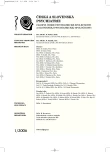Membranes II: Nerve Cell Membrane in the Development, Stress, Nutrition Alterations and during Neuroplastic Changes
Membrány II: Membrána nervové buňky ve vývoji, při stresu, při změnách výživy a v průběhu neuroplastických změn
V průběhu postnatálního vývoje výrazně stoupá v mozkové kůře zastoupení polyenových mastných kyseliny řady n-3 především v důsledku akumulace kyseliny dokosahaxaenové. U lidského novorozence existuje výrazný gradient těchto mastných kyselin mezi krví matky a krví novorozence. Snížením obsahu polyenových mastných kyselin v průběhu stárnutí se mění fluidita membrány. Stresory (hypoxie, ischemie, hypo nebo hyperglykémie, horečka, infekce, nepřiměřená stimulace – bolest, fixace a omezení pohybu atd.) zvyšují produkci kyslíkových radikálů, dochází k aktivaci fosfolipáz, lipoperoxidaci a narušení membrány nervových buněk.
Ve vyvíjející se nervové tkáni jsou neuronální prekurzory a rostoucí výběžky neuronů naváděny specifickými komponentami buněčných membrán – adhezivními proteiny. Stejné mechanismy jsou zodpovědné i za neuroplastické děje vzniku, přestavby a obnovy neuronálních okruhů. Změny v expresi adhezivních proteinů mohou vést k poruchám tvorby a funkce modulačních neuronálních okruhů, změnám výdeje neurotransmitérů, a tedy poruchám v oblasti integračních funkcí nervového systému.
Specifické proteiny presynaptické membrány umožňují vazbu synaptických veziklů na buněčnou membránu a výdej neurotransmitéru mechanismy exocytózy. Tento proces může probíhat dvěma základními mechanismy: je-li koncentrace kalcia v presynaptickém útvaru relativně nízká, splývá synaptický váček s membránou delší dobu; při vysokých hodnotách hladiny Ca2+ je vezikl uvolněn krátce po vazbě na membránu a po uvolnění mediátoru.
Klíčová slova:
struktura membrány, stres, výživa, presynaptický element, neuronální okruhy, adhezivní proteiny.
Authors:
J. Mourek 1,2; M. Langmeier 1; J. Pokorný 1
Authors‘ workplace:
Fyziologický ústav 1. LF UK, Praha
; přednosta prof. MUDr. O. Kittnar, CSc.
Zdravotně sociální fakulta Jihočeské univerzity, České Budějovice
1; přednosta prof. MUDr. M. Velemínský, CSc.
2
Published in:
Čes. a slov. Psychiat., 102, 2006, No. 1, pp. 31-35.
Category:
Comprehensive Reports
Overview
During the postnatal development the representation of n-3 polyenic fatty acids increases. In the human foetus their concentration has a distinct gradient between the maternal and foetal blood. During ageing the content of polyenic fatty acids decreases and the membrane fluidity diminishes. Stressors (hypoxia, ischemia, hypo - or hyperglycaemia, fever, infection, stimulation overload and pain, restriction of movements etc.) increase production of oxygen radicals, which activate phospholipases and impair membrane of the nerves cells.
The developing and migrating neuronal precursors and growing neuronal processes are guided by specific components of cell membranes – adhesive proteins. Similar mechanisms are responsible for the neuroplastic processes of the formation, remodelling and recovery of neuronal circuits. Changes in the expression of adhesive proteins brings about possible impairment of the formation and function of the modulatory neuronal circuits, changes in the release of neurotransmitters in the hippocampus and cerebral cortex and thus alterations of the integratory functions of the nerve system.
Specific proteins of the presynaptic membrane make possible the interaction of synaptic vesicles with the cell membrane and the exocytotic release of neurotransmitter. There exist two mechanisms of the neurotransmitter release. When the calcium level in the presynaptic terminal is comparatively low, vesicles fuse with the membrane for longer time; when calcium level is high, vesicles are released immediately after the neurotransmitter was discharged.
Key words:
structure of the membrane, stress, nutrition, presynaptic element, neuronal circuits, adhesive proteins.
Labels
Addictology Paediatric psychiatry PsychiatryArticle was published in
Czech and Slovak Psychiatry

2006 Issue 1
- Memantine in Dementia Therapy – Current Findings and Possible Future Applications
- Hope Awakens with Early Diagnosis of Parkinson's Disease Based on Skin Odor
- Memantine Eases Daily Life for Patients and Caregivers
- Deep stimulation of the globus pallidus improved clinical symptoms in a patient with refractory parkinsonism and genetic mutation
Most read in this issue
- Parental Alienation Syndrome
- Childhood Autism: A Research Update
- Pharmacotherapy for Cognitive Dysfunction in Schizophrenia
- Sexual Aggression in Women
